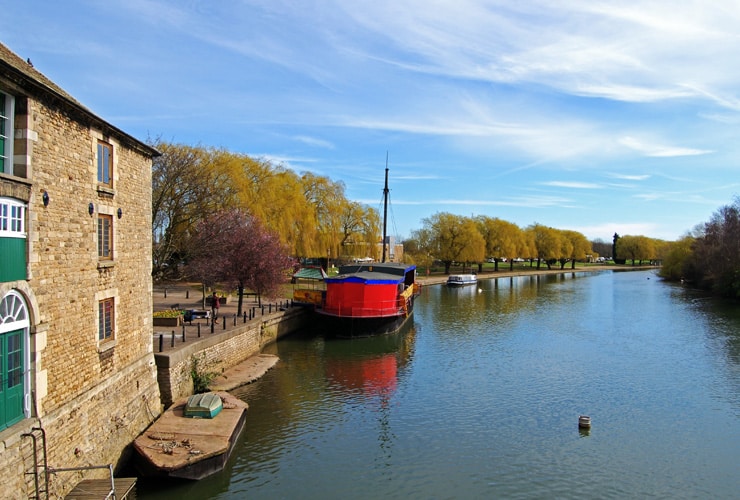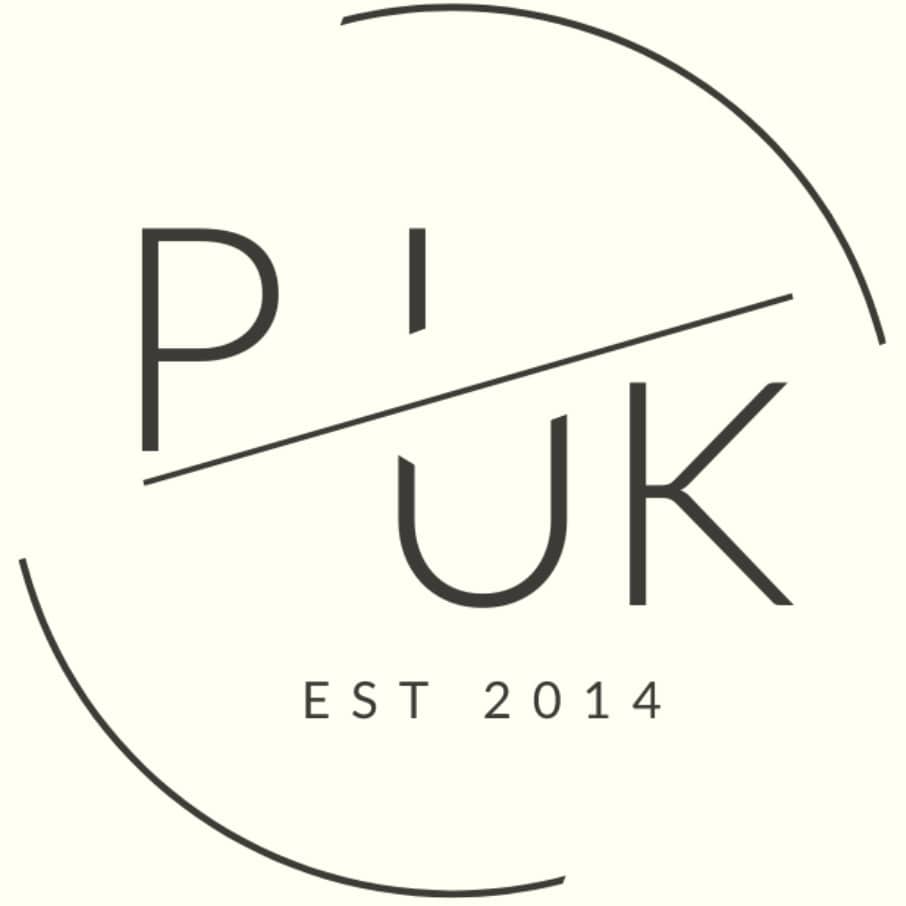Areas of Peterborough: Property Investment Buy-to-Let Hotspots
It could be said that Peterborough is the perfect place for lazy cyclists and savvy property investors alike! Peterborough is right on the edge of the flat-as-a-pancake Fenlands, with no steep hills for miles. More importantly, though, Peterborough is one of the cheapest places in the East of England while being just 46 minutes from London… making it something of an affordable hotspot convenient for the capital.
Why Invest in Peterborough?
The modern city of Peterborough is a new town. First set up in 1967 it has expanded year after year since – and it’s still growing fast. Peterborough’s population is now around 215,673, according to the 2001 census.
There’s a huge demand for housing to meet this growth. Peterborough City Council says that Peterborough is the country’s fifth fastest-growing city and needs 19,400 more houses by 2036.
Peterborough is 98 miles from London but the fastest train takes just 46 minutes. So Peterborough is becoming more popular with those who need to travel to London but who are looking for an affordable place to live.
More good news for buy to let landlords is that Peterborough is one of the most popular places in the UK for those coming from abroad to work.
While Peterborough is part of Cambridgeshire it has its own local authority Peterborough City Council which provides local services. Peterborough also works with the nearby booming city of Cambridge in the Cambridgeshire & Peterborough Combined Authority.
Peterborough is originally a manufacturing city, known for its brickworks including the London Brick Company and its famous Fletton brick. Today, Peterborough’s economy is mostly service-orientated.
According to Opportunity Peterborough, the economic development company, Peterborough has several high performing business sectors: Advanced engineering and manufacturing, agri-tech, food and drink, digital and creative, energy and environment, and financial services.
Peterborough city centre has benefitted from lots of redevelopment in recent years, helping to make it a better place to live and work. Regeneration work on Cathedral Square, St John’s Square, Long Causeway, Bridge Street and many other parts of town has attracted new shops, restaurants and businesses.
The centre is also due to benefit from a master plan to redevelop the Station Quarter. This will create a smart new gateway to the city and add new business space and homes to make Peterborough more attractive to London commuters. The Fletton Quays development on the River Nene will also be home to a new 1,000-job government hub.
Student property investors need to know that, although Peterborough doesn’t have its own university (not just yet!) the Anglia Ruskin University has a campus here. So there’s a student accommodation market too.
Very excitingly, plans are also in hand to set up a new Peterborough University on a brand new site with 2,000 students by 2022. This could be really good news for investors who want to invest in student houses.

Transport Links and Attractions
One of Peterborough's biggest selling points is its location and transport links. There are up to five trains an hour into London, with additional express trains to the Midlands, Yorkshire, Leeds, Newcastle, and Scotland. Peterborough is also situated on the A1 and A1(M) motorway, as well as the A15, A16, and A47 routes.
Peterborough has a rich history, dating back to at least 655 AD. The city boasts a range of amenities and attractions, including Peterborough Cathedral, Peterborough Museum, the Key Theatre, the New Theatre, the Nene Valley Railway, and Flag Fen, an ancient Bronze Age site. Nearby, Burghley House is considered one of England's greatest Elizabethan houses.
Peterborough is also known for its football club, Peterborough United, nicknamed 'The Posh'.
Property Values
Although Peterborough isn't the cheapest area in the UK, it's still much more affordable than London and much of the south of England. The average property price (as of early 2024) in the Peterborough area is £276,000, while the median price is £245,000. In comparison, the average sold price for a property in London over the last 12 months has been £731,912.
You can find properties in Peterborough on Rightmove or Zoopla starting at around £64,000.
Average Asking Price by Postcode Area
Last updated: July 2024
Data from HM Land Registry
| Postcode District | Average Property Price |
|---|---|
| PE1 | £224,833 |
| PE2 | £249,962 |
| PE3 | £268,979 |
| PE4 | £251,920 |
Rental Demand
Peterborough has a high demand for rental properties, with an average monthly rent of £879 in March 2024. Rents are predicted to continue rising due to an ongoing imbalance between supply and demand.
The average private rent in Peterborough was £883 in February 2024, an annual increase of 7.9%. This is higher than the average rent in England, which was £994 in September 2023.
The specific rent a landlord can expect to earn depends on the property type. In Peterborough, rents start at £477 for a single room and rise to £1,261 for a house with four or more bedrooms.
The city's rental market is characterised by a low vacancy rate, which stood at 1% in 2023. This has led to a stressed rental market, with tenants having to sometimes lower their expectations for rental housing due to limited options.
Peterborough's local government has recognised the need for more housing and is working towards increasing the supply.
Average Rental Yield by Postcode Area
Rental yield is the rental return an investor can expect on their investment once costs have been taken into consideration.
Last updated: July 2024
| Postcode District | Average Rental Yield |
|---|---|
| PE1 | 4.9% |
| PE2 | 5.1% |
| PE3 | 4.9% |
| PE4 | 5.1% |
Landlord Licensing
Peterborough City Council has implemented a Selective Licensing Scheme to improve rental standards and tackle issues related to high-density private rented housing. This scheme, which launched on 11 March 2024, requires landlords in designated areas to obtain a licence for each property they rent out. The scheme will run for five years, with the possibility of renewal.
Selective Licensing
The Selective Licensing Scheme targets specific areas within Peterborough, focusing on locations with high levels of private rented housing and issues such as anti-social behaviour, poor property conditions, and high crime rates. The scheme covers various housing types, including flats, and currently includes wards like Fletton and Stanground, Bretton, Central, East, and North.
As of July 2024, the cost of a Selective Licence in Peterborough is £608 if applied for within the first 30 days of the scheme and £908 for later applications. The licence is valid for five years and non-transferable.
Article 4 Direction
Peterborough has also introduced an Article 4 Direction, which removes permitted development rights for converting houses into Houses in Multiple Occupation (HMOs). This direction is in place in areas like Hampton, Fletton and Woodston, meaning landlords must obtain planning permission for such conversions.
HMO Licensing
In addition to the Selective Licensing Scheme, Peterborough has mandatory HMO licensing requirements for properties with five or more occupants, as is uniformly true for all of England and Wales.

The Best Places to Live in Peterborough
Peterborough has a diverse range of neighbourhoods, each with its unique character, amenities, and housing options. Here are some of the best places to live in the city:
- Orton Longueville: A peaceful, green neighbourhood ideal for families, with easy access to schools, parks, and amenities. The area offers a mix of quaint village life and modern housing developments.
- Hampton Vale: A trendy, up-and-coming area with new housing developments, shops, restaurants, and amenities. It's perfect for those seeking a modern environment and is surrounded by lakes for weekend walks.
- Whittlesey: Located six miles east of Peterborough, Whittlesey offers large, attractive homes with ample space and privacy. Its own train station provides convenient travel to Peterborough city centre and beyond.
- Yaxley: Situated four miles south of Peterborough, Yaxley has a mix of detached, semi-detached, and townhouse properties. It boasts a strong community feel, with schools, playgrounds, restaurants, and cafes, making it ideal for families.
- Stamford: While not technically part of Peterborough, Stamford is only a short drive away. It was voted the best place to live by The Sunday Times in 2021 and offers a charming, picturesque setting. It attracts professionals and families with its balance of calm and connectivity to nearby areas.
- Hampton: Just south of Peterborough, Hampton is popular with young professionals due to its easy connections and amenities. It offers a mix of new buildings, green spaces, parks, and community areas.
- Hampton Hargate: Located southwest of Peterborough, Hampton Hargate is ideal for young families with its pre-schools, day care centres, primary schools, and Hampton College.
Other notable mentions include Thorpe Road, Thorpe Meadows, Orton Wistow, Longthorpe, Werrington Village, Castor, Cardea, and Westwood.
Property Investment in Peterborough
Property investors ought to know that the Peterborough property market is quite different from most other cities in England.
As a one-time new town Peterborough has been master-planned around a number of different townships or suburbs. Each township is made up of a number of villages comprising private and social housing estates, with its own shops, schools, local amenities and lots of green space.
Peterborough’s different suburbs are linked to each by parkways making it easy to get around by car, bus or bike.
Peterborough has over 20 different suburbs but here are our investor's guide to a few of them:
City Centre and Inner Suburbs
Population: 48,300
Average House Price: £192,000 – £220,000
Peterborough city centre is the only truly old part of the city. Investors will find Victorian, Edwardian and pre-war housing here including some traditional terraced houses which are good for buy-to-let.
The city centre is also seeing more newly built properties designed to appeal to commuters who want to take advantage of expanding local industries and the great commuting time to London.
Other inner suburbs include Old Fletton, New Fletton, Woodston, Fengate and Stanground.
The city centre and inner suburbs are generally a lower-mid-priced property area.
Yields based on the PE1 postcode area are 5.1%%, while in PE2 investors can expect 4.7%.
North Peterborough
Population: 88,000
Average House Price: £205,000 – £280,500
Suburbs to the north of Peterborough include Bretton. Bretton is one of the original townships of Peterborough. It consists of Bretton Centre, North Bretton and South Bretton. The area has several large housing estates set in lots of green space with shops, schools and other amenities plus several industrial estates offering employment.
Werrington was originally a village but developed into a largely residential suburb from the 1970s onwards. Werrington Village still has a village atmosphere with older housing while North Werrington and South Werrington are newer-built residential estates.
Other northern Peterborough suburbs include Walton, Paston, Gunthorpe, New England, Dogsthorpe and Newark.
North Peterborough offers investors a range of housing types and prices and offers both lower and mid-priced property investments.
Yields in both PE3 and PE4 are around 4.8% and 4.6% respectively.
South Peterborough
Population: 62,700
Average House Price: £227,000 – £375,000
Orton was the second Peterborough township to be constructed. It was built around the old villages of Orton Waterville and Orton Longueville, which have some period houses, plus several new build developments including Orton Brimbles, Orton Goldhay, Orton Malborne, Orton Southgate, Orton Wistow and Orton Northgate.
Orton has great access to the A1 and A1(M) as well as the city centre.
Hampton or The Hamptons is Peterborough’s latest township. The area only started to be developed in 1996 and new houses are still being built here. Hampton is divided into smaller village areas such as Hampton Hargate, Hampton Vale, Hamptons East and Hampton Heights.
The area has shops, schools, local amenities, parkland and a nature reserve plus nearby business parks providing jobs.
Orton and Hampton are Peterborough’s most popular residential areas and very popular for family and professional buy-to-let. They’re mid-higher property-price areas of the city.
Yields in both PE2 and PE7 postcode areas are around 4.8-5.2%%.
Other Areas To Consider
The area surrounding Peterborough offers lots of towns and villages which property investors might also consider:
- Whittlesey
Just to the east of Peterborough Whittlesey on the A605 is a small town in the Fens. It’s a popular area for those who want to live in a more rural and commute into Peterborough. - Yaxley
Yaxley is a traditional village to the south of Peterborough, with a village green, and period properties as well as newer houses. It is minutes from the A1(M) for longer distance commuters. - Market Deeping, Deeping St. James and Deeping Gate
These traditional villages are popular residential spots just to the north of the city on the A15. They’re located in the county of Lincolnshire. - Stamford
The historic town of Stamford, also in Lincolnshire, is a separate small town about 10 miles north-west of Peterborough itself. It has a station offering trains to Peterborough (13 minutes) plus Birmingham and Stansted Airport amongst other destinations. It’s a big favourite with affluent Peterborough commuters and is a higher-priced area.
